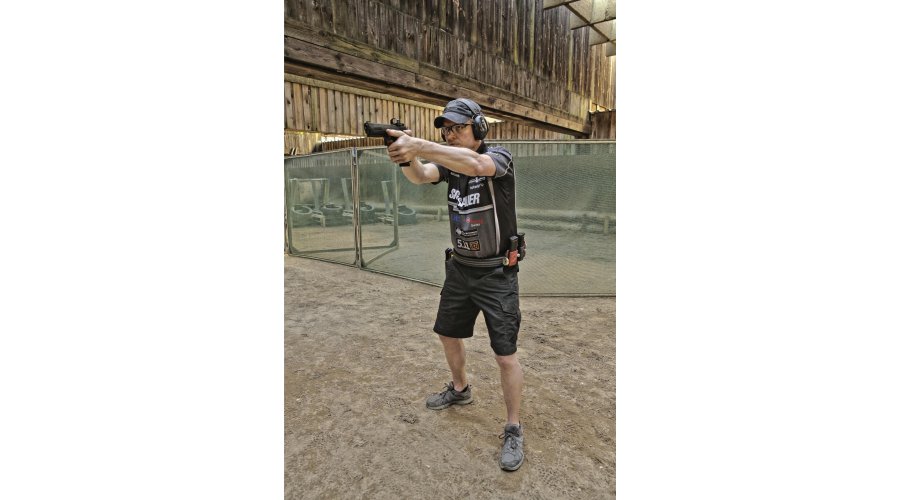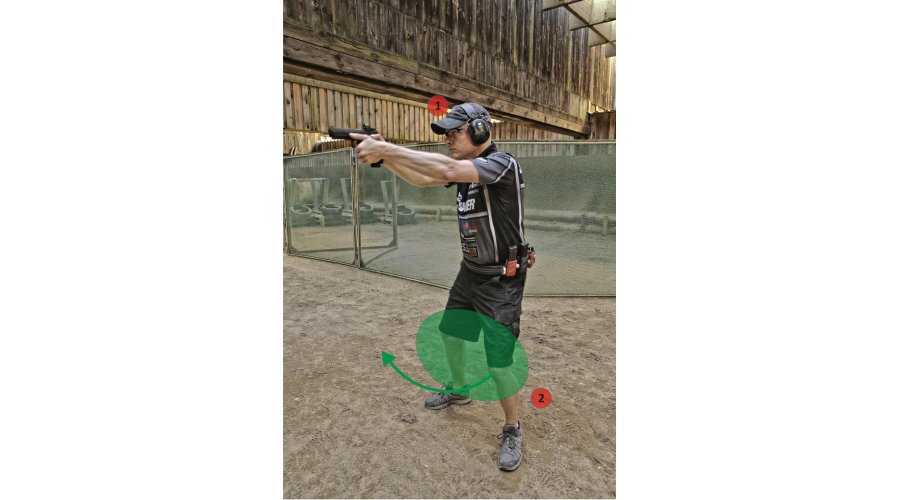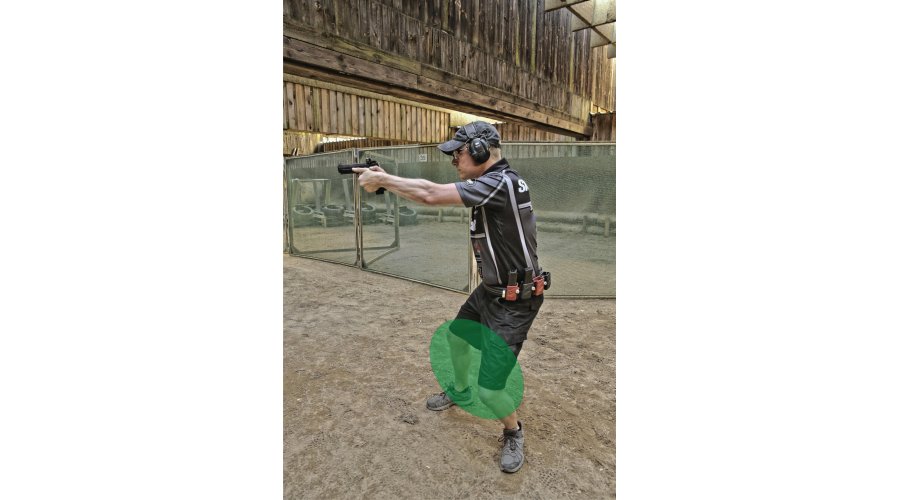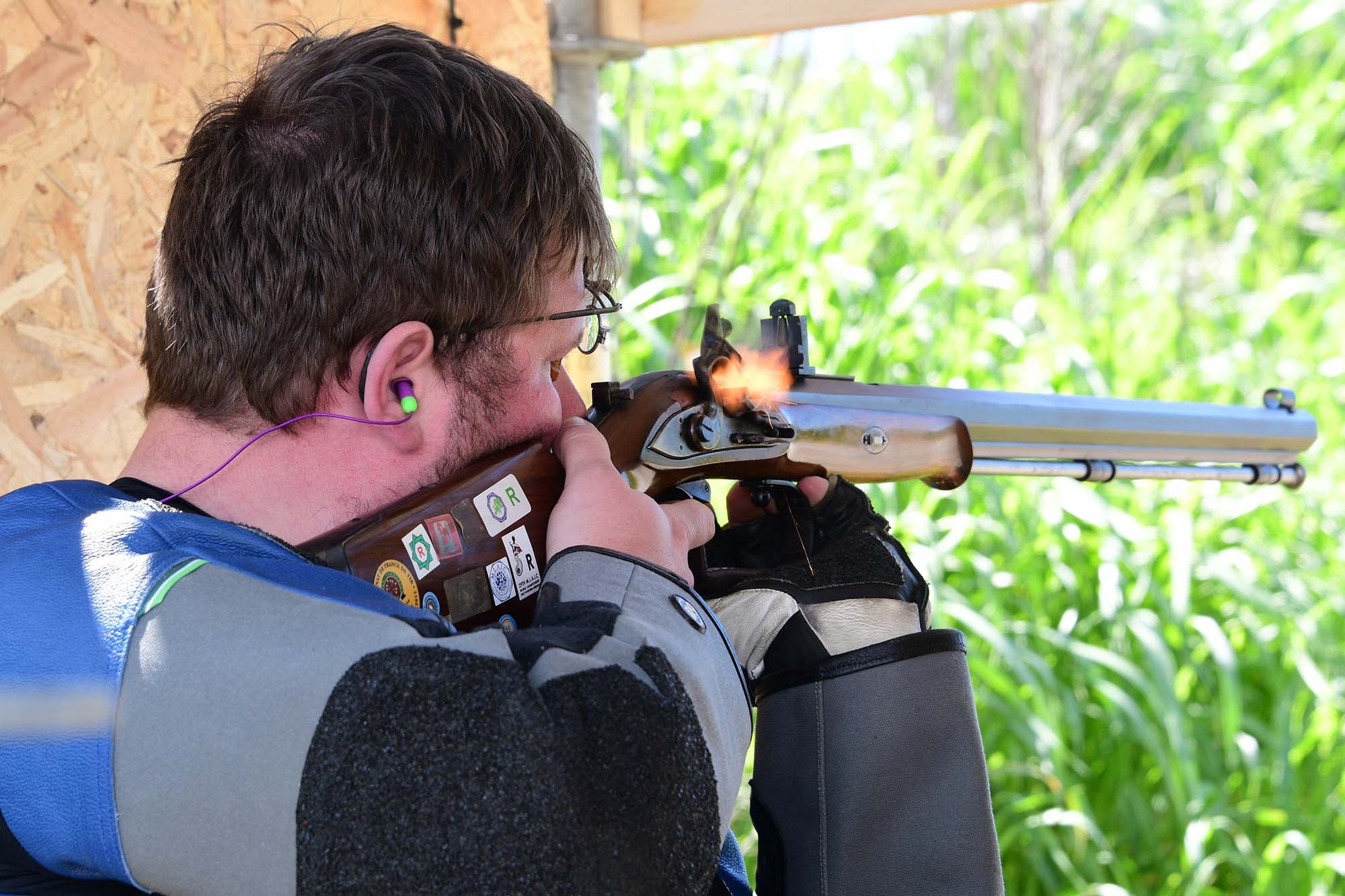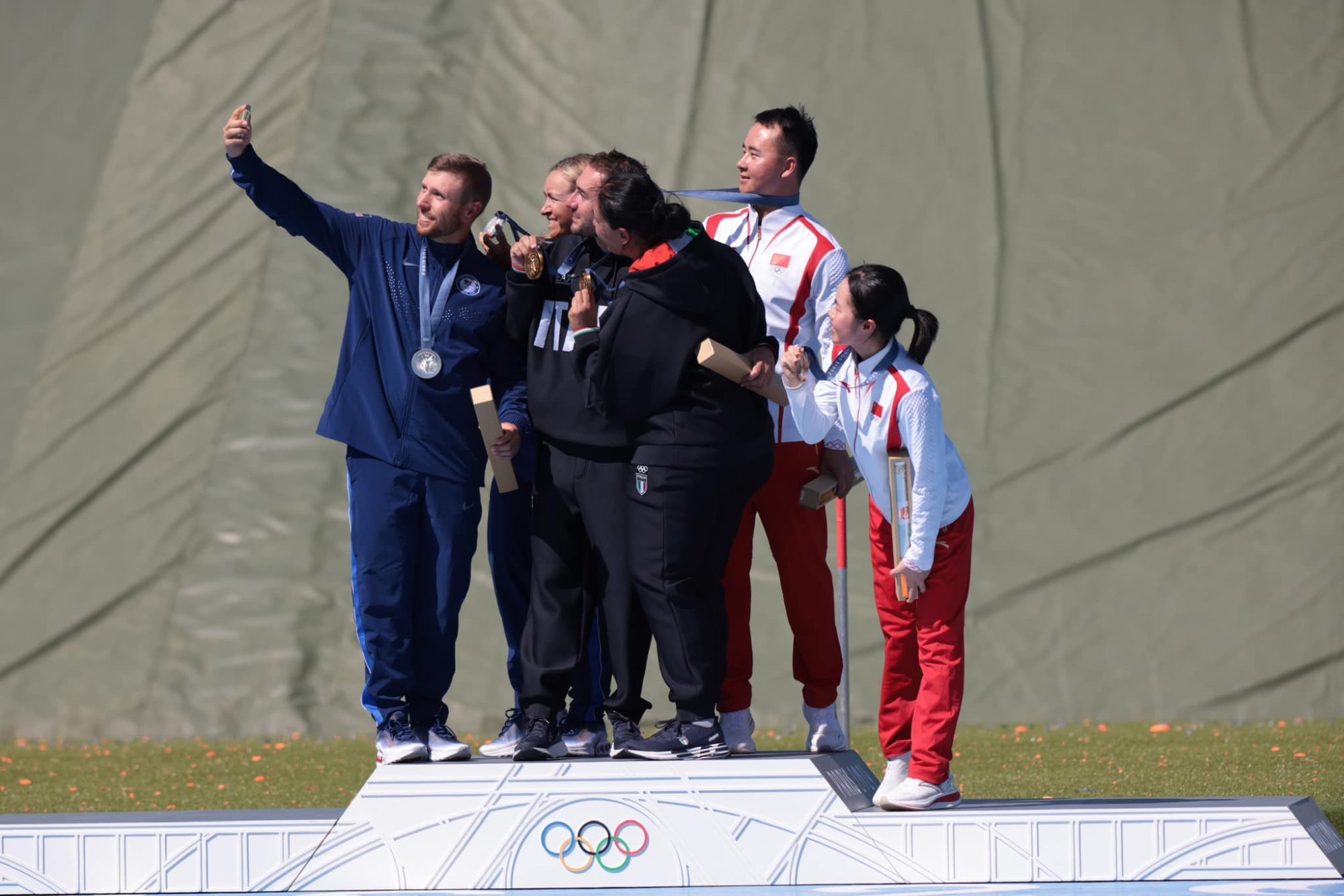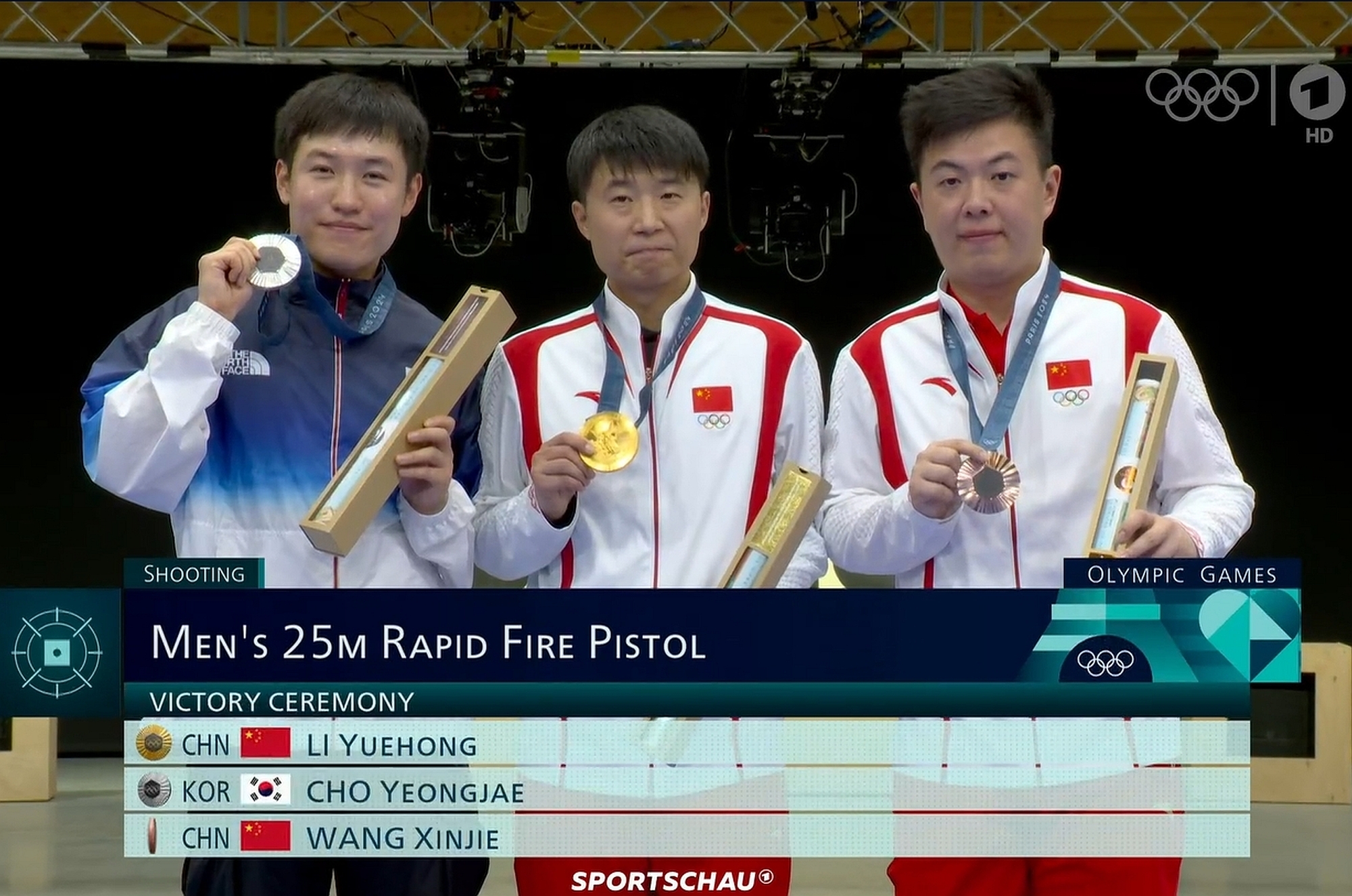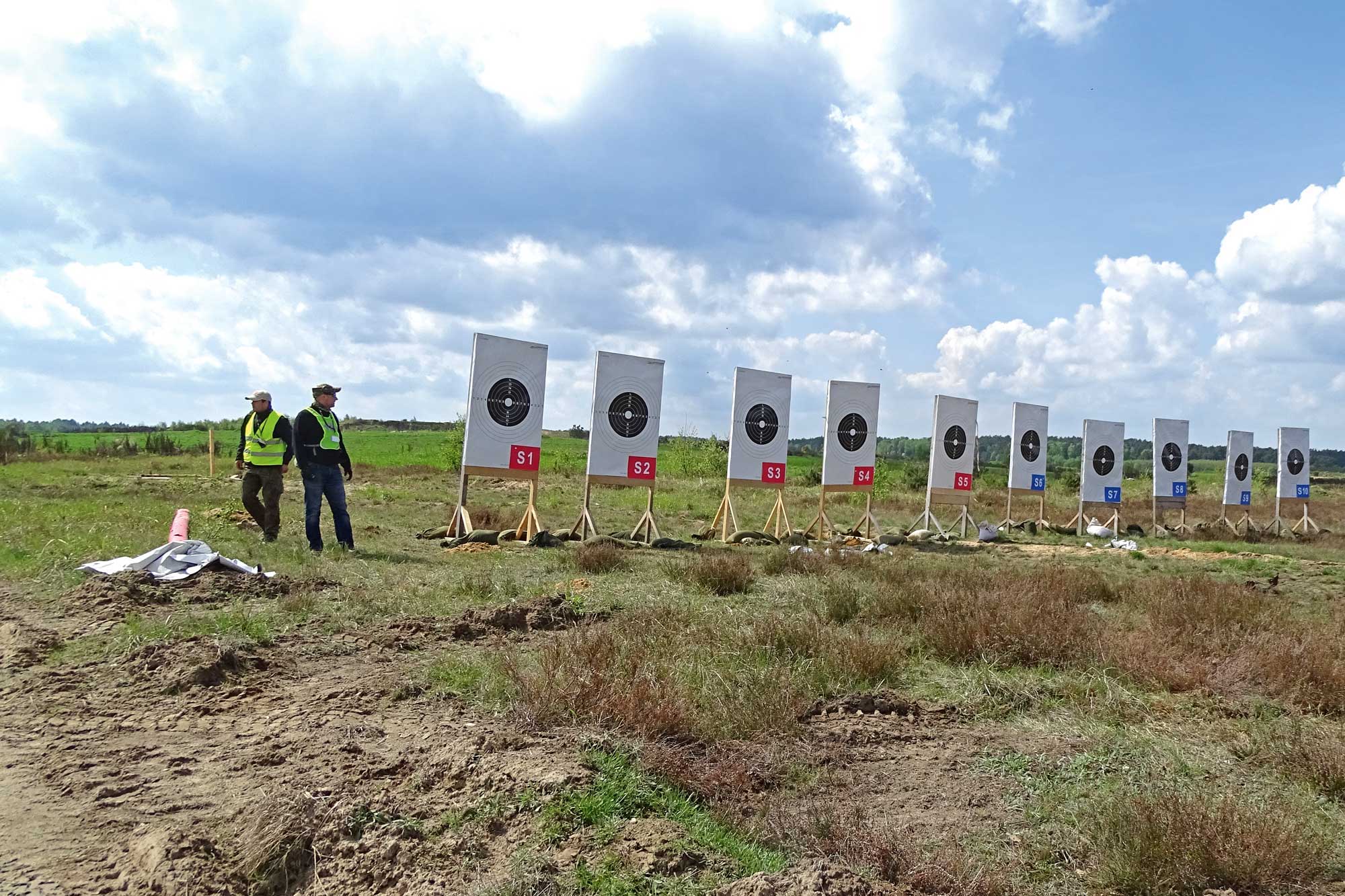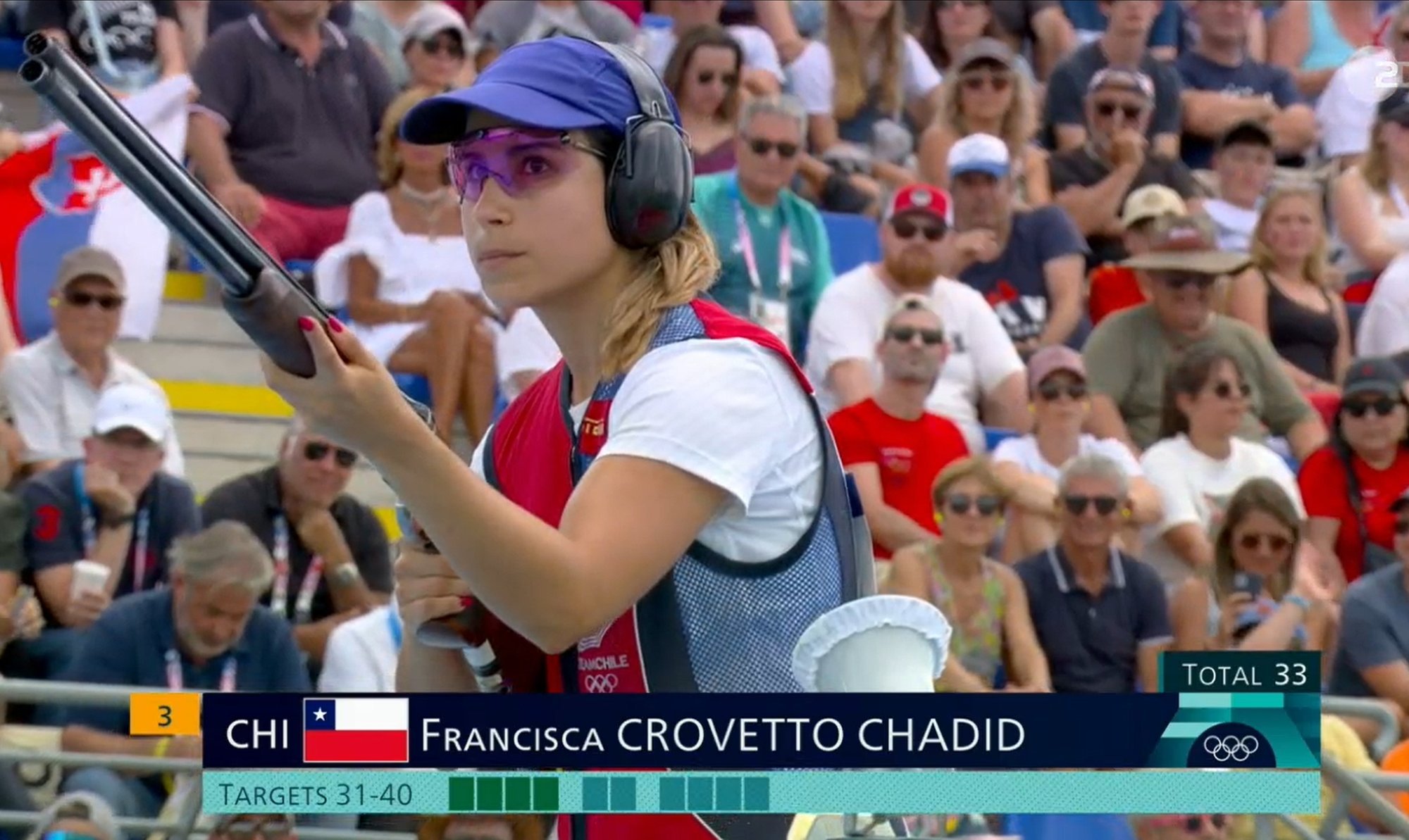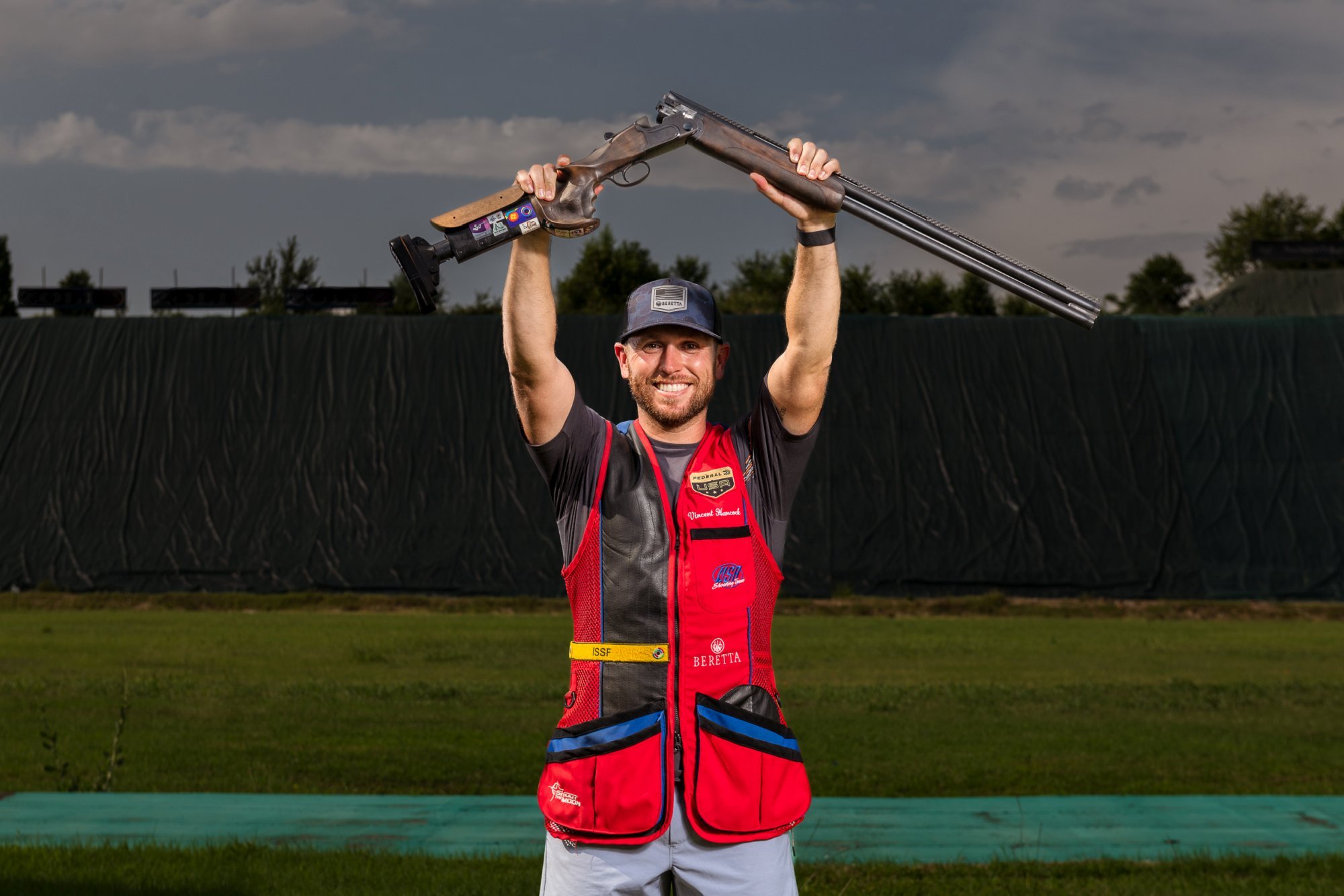The right sequence of movements for target transitioning in 4 steps
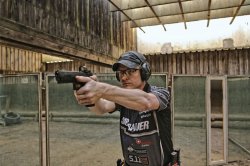
Target transitioning is certainly where the majority of shooters waste most of their time on a stage. Simply put, target transitioning means aiming the gun at a new target and maintaining the aim until the shot is fired. In detail, the following steps are behind it:
-
The new target is visually picked up.
-
The gun is aimed at the new target.
-
Sight picture checking.
- The gun remains on the new target until it has been hit.
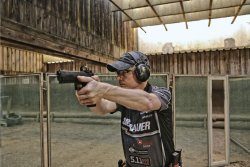
However, when we talk about "picking up the new target" (point 1), we do not mean the new target itself, nor the entire IPSC silhouette. Rather, the focus is on the exact point you want to hit. In our example, the middle of the A zone or the center of the calibration zone in a Classic Popper. The gun will always follow our gaze – in both a positive and negative sense. To emphasize once again: first, look carefully at the point you want to hit and only then the gun is brought there! The effectiveness of this principle can be demonstrated quite well by an everyday example. If you sit in front of the PC and want to open a file folder with a mouse click, you look first at the folder and then bring the mouse pointer there. If, on the other hand, you were to keep your eyes on the mouse pointer, you would not only have problems finding the folder, but you would also be slower to move. By the way, exercise is another good keyword. Although we should strive to transition targets quickly, abrupt gun movements should be avoided as much as possible because they can disturb the sight picture. So a correct balance between fast movements and early stopping is required. In any case, avoid overshooting the target. As already mentioned in the chapter on correct posture,
legs can also be used to help target transition. This usually makes sense for target transitions over 45 degrees.
Dynamic pistol shooting aiming
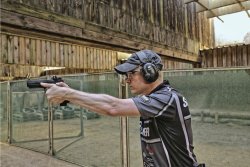
After dealing with the movements for target transition, we now turn to aiming. This is highly complex and depends on many factors (such as target disposition, shooting skill, sights, etc.). Sight alignment in this context can mean anything from a brief flash of the fiber optic sight in the center of the target to the sharply outlined front sight perfectly centered in the backsight notch. It is essential that you work your way through training to find how much you have to aim for an acceptable hit in a variety of different target disposition. If the target is less than seven meters away, the round can ideally be fired if the gun breaks an imaginary line between the eye and the target center. In principle, it isn’t necessary to pause on the target and the focus must be taken back from the target to the front sight. Speaking of focus: our eyes can only focus on one object. This is either the target or the sights (with an iron sight, strictly speaking, only the back or the front sight can be seen really sharp) and although the focus should basically be on the sights, in IPSC shooting, contrary to the classic practice, static target shooting with a so-called target focus is a viable option that can be used to hit easy targets effectively and quickly. As with many things, the secret here is trying out.
Frequent mistakes when transitioning targets
The target must be aimed at until it has been hit. This may sound obvious, but sooner or later to optimize the target transition you'll be tempted to simply “swing over” a number of targets, so the gun will practically never stop on the target. That is not what we want. The goal is to swing the gun exactly from one target to the next and to let it stay there. Merely “swinging over” leads only to bad hits, if not even missed shots. Another common mistake in this regard is that the eye is already aimed at the next target before the previous shot is completed. Be disciplined and wait for the necessary visual feedback to see if the target has been hit and then turn your eyes to the next target.
Practise target transition correctly
Target transition can also be practised in dry-fire training. However, be aware that in traditional dry-fire training you do not get any feedback on the "hits" and it can easily happen that you are a bit over-motivated; the gun is taken off the target early or you do not really aim carefully enough. So in dry-fire training you have to be very honest with yourself if you do not want to succumb to misconceptions about your own abilities. From our own experience it pays to acquire one of the laser training systems available on the market at favorable prices. For accuracy training, we also recommend that you always position targets with different levels of difficulty. Vary with target distances and sizes. In this way you will learn to quickly adapt to drastic changes in difficulty and speed.
Here are the other parts of our series on dynamic handgun shooting:
- Part 1: The perfect grip for pistol shooting
- Part 2: The perfect pistol shooting posture
- Part 3: The trigger control for perfect pistol shooting
- Part 4: The drawing process for perfect pistol shooting
- Part 5 : The magazine change for perfect pistol shooting
Further information on dynamic handgun shooting:
Which IPSC classes are there in the field of short guns? We offer you a short overview to the Handgun Divisions.



